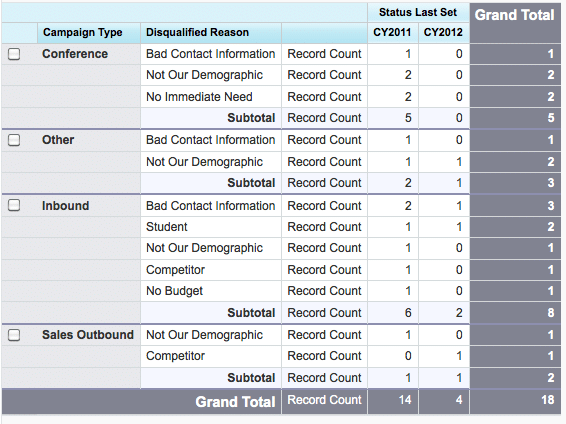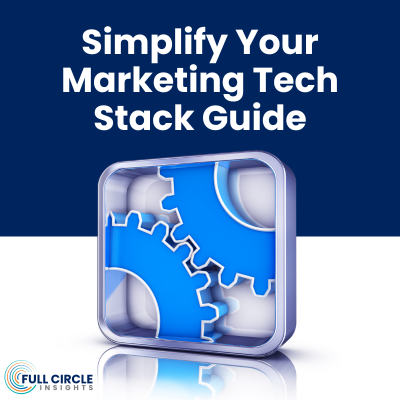Jay Famico recently wrote a blog post for SiriusDecisions about Sales Accepted Leads: Disqualification Reasons. This best practice of capturing the reason a lead is disqualified is one of Full Circle Insights’ recommendations as well. We think this feedback loop between sales and marketing is a critical piece for aligning the two organizations, as well as an important metric to capture and understand. Sirius Decision’s recommended values and descriptions of these disqualified reasons are pretty comprehensive – so rather than repeating them in this post check out the hyperlinked blog above. We have some thoughts, however, on implementing this within salesforce.com that we wanted to share with you.
Remember – it’s not just a Lead Record
Because we know your contact database is responding to your marketing campaigns – we recommend a contact status and a disqualified reason on contact records as well. This enables you to get the same feedback across Leads and Contacts. Learn more about Full Circle Insights’ recommendations for designing a lead lifecycle in Salesforce and be sure to read the add-on to using a Disqualified Reason value in our Best Practice: Sales Assignment Time-Outs blog post.
Disqualified can be too strong a word
We have found that some customers are uncomfortable with using a status of Disqualified for all cases – they prefer to segment status values, where for some they Disqualify, and others they set the status back to Nurture or Marketing. In this case you can leverage the ‘Disqualified Reason’ pick list as a dependent pick list for both status values – and present options specific to that choice of values. For this reason you may not want to call it ‘Disqualified Reason’, you may opt for something more generic like ‘Reason’ or ‘Disposition Reason’.
But Wait – I’m loosing this information!
It’s great to capture the Disqualified Reason on leads and contacts, but it’s just as important to analyze it against sales and campaign performance metrics. However, keep in mind that we re-engage with people over time, and if you are keeping a clean database ideally your lead generation efforts eventually re-open these leads and contacts for sales engagement. When that happens the disqualified reason is overwritten.
One of the common problems with Disqualified Reasons is that storing this data on the Lead or Contact record has no relationship whatsoever to the campaign – how do you know the outcome of an engagement tied to a specific campaign?
This was an important consideration in designing the Full Circle Insights Marketing Performance Management application – this is why we leverage our patent pending sync field functionality to push this data up to the response (campaign member record) so that it is preserved even when the Lead or Contact is re-opened.
Now we have a historical record that we can analyze and answer key questions at the Campaign level such as:
- What was the quality of responses generated by this campaign – for those ‘disqualified’ or sent back to nurture – what was the reason?
- How long did it take to disqualify the leads? Is there a connection between sales follow-up time and disqualification rates/reasons?
- Are we seeing disqualification trends across campaign types, content areas, regions, demographic or, firmographic respondent data?
- Are we seeing trends over time? Since the Campaign member record has a response date (and our system knows when it was disqualified) time is now a dimension you can report on – pretty cool, right?
- What is common in those responses that were not disqualified – how can we refine our messaging and targeting to generate more viable responses?
- How are responses that are disqualified because they are too early in the buying cycle (No budget, Not ready to buy within X months, No Authority) contributing to revenue down the line? We may want to value responses disqualified for these reasons because with the Full Circle Insights Campaign Influence model we can demonstrate that this early touch is an important step to driving revenue down the line.
- Of course, since we capture score information as well, you can now evaluate this data against scores and make data-based scoring adjustments.
OK, so this stuff is really fun to geek out on – if you are interested in some of the benefits of reporting in salesforce.com with the Full Circle Insights – check out the Analytics Advantage we provided in salesforce.com.
That’s it for today – Happy New Year from all of us at Full Circle Insights!
Some screenshots below – see what you like:






